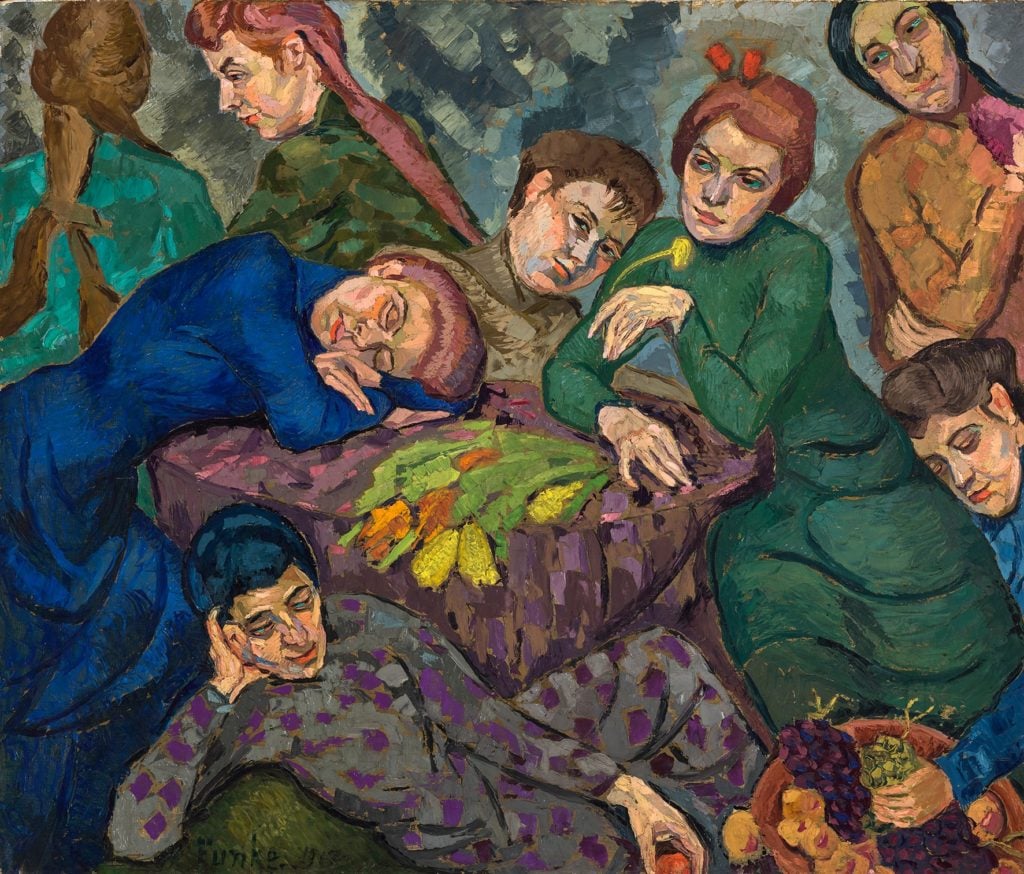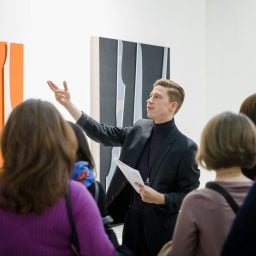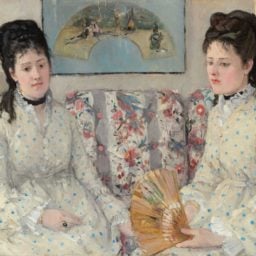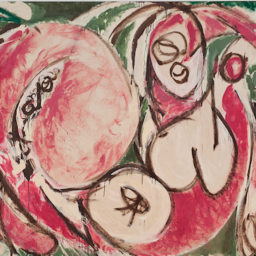In the era of #metoo and #notsurprised, gender parity in art is a hot topic. But what was it like for female artists a century ago?
In Vienna, it was more equal than you’d think, until now. “City of Women: Female Artists in Vienna, 1900–1938,” an expansive exhibition up until May 19 in the city’s Lower Belvedere, traces the work of female artists in early 20th-century Austria, who held their own alongside men like Gustav Klimt and Egon Schiele. Around 270 sculptures, paintings, drawings, woodcuts, and graphic design by 56 women make clear that female artists were busy and visible in Vienna’s Modernist period, and their work was sometimes groundbreaking.
They were educated, despite the fact that women could only study at the Vienna art academy starting in 1920. They were networked, founding women-only artist associations and showing in avant-garde galleries. They were astonishingly diverse and emancipated—some were married and mothers, others were not. All of them were written out of art history come World War II.
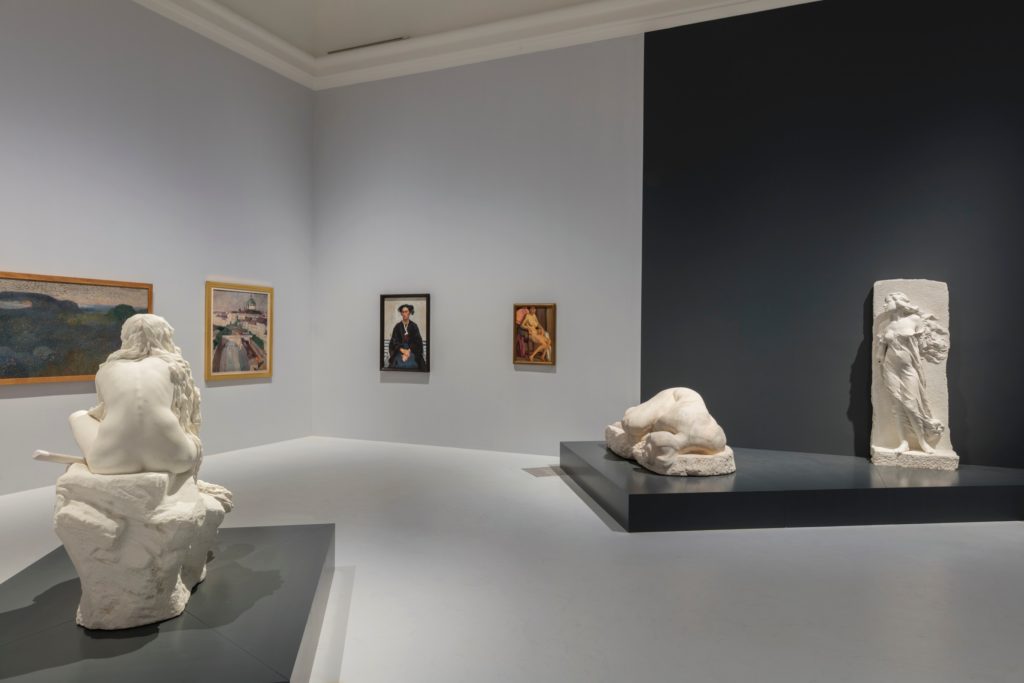
“City of Women” is a step toward rewriting this history in still-lifes, landscapes, and portraits; but also non-idealized depictions of motherhood and images of poverty. Helene Funke’s paintings vibrate with bold colorwork; Elza Kövesházi Kalmár’s tiny sculptures depict barefoot female dancers in ways that were revolutionary a century ago. Some artists even addressed politics, like Bauhaus-trained Friedl Dicker-Brandeis in her late-1930s collages. “These women were remarkably present,” says curator Sabine Fellmer. “But art history forgot them.”
The show is heavy on wall descriptions—seminal exhibitions are explained, biographies traced, and contexts are provided of how progressive artistic life was at the time. There’s information on groups like Eight Women Artists, founded in 1901, and the broader and still existing VBKÖ (Association of Woman Artists in Austria) in 1910.
As president of the Vienna “Kunstschau” exhibition in 1908, Klimt saw to it that the show featured one-third female participation (contemporary curators, take note). And the first feminist exhibition was not in 1970s America, but rather “The Art of the Woman” in 1910 in the Secession. Curated by women, it showed 300 contemporary and art-historical works by female artists and was well visited and reviewed. As Fellmer asks: “Is it possible that about a century ago we were much further ahead on this issue than we are now?”
Yes, and it’s unsettling to consider how little has changed.
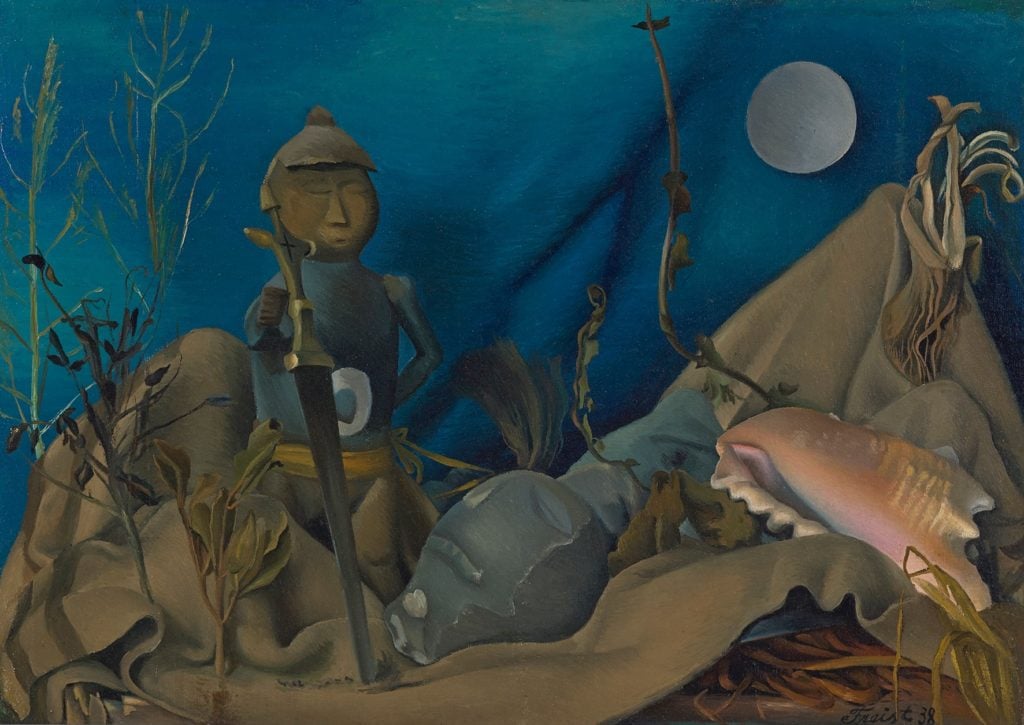
Greta Freist, Wache, 1938. Photo: Johannes Stoll © Belvedere, Wien.
Why were these women “erased” for so long? For one thing, a third of the artists were Jewish, and their work was deemed unsuitable for the Third Reich’s aesthetics (Austria was annexed into Nazi Germany in March 1938)—some escaped Austria and took their work with them.
More importantly, postwar Austria was profoundly conservative and failed to re-canonize these artists.
Many pieces in the show were difficult to source. More than 30 come from the Belvedere’s collections; research unearthed far more from private collections, dealers, and even a basement. “So much is still lost,” says Fellmer, yet “City of Women” is a feast for the eyes and mind, illuminating a neglected aspect of Viennese Modernism and showing how women artists overcame obstacles. We asked Fellmer to discuss the work—and backstories—of five of these pioneers.
Tina Blau: the Star
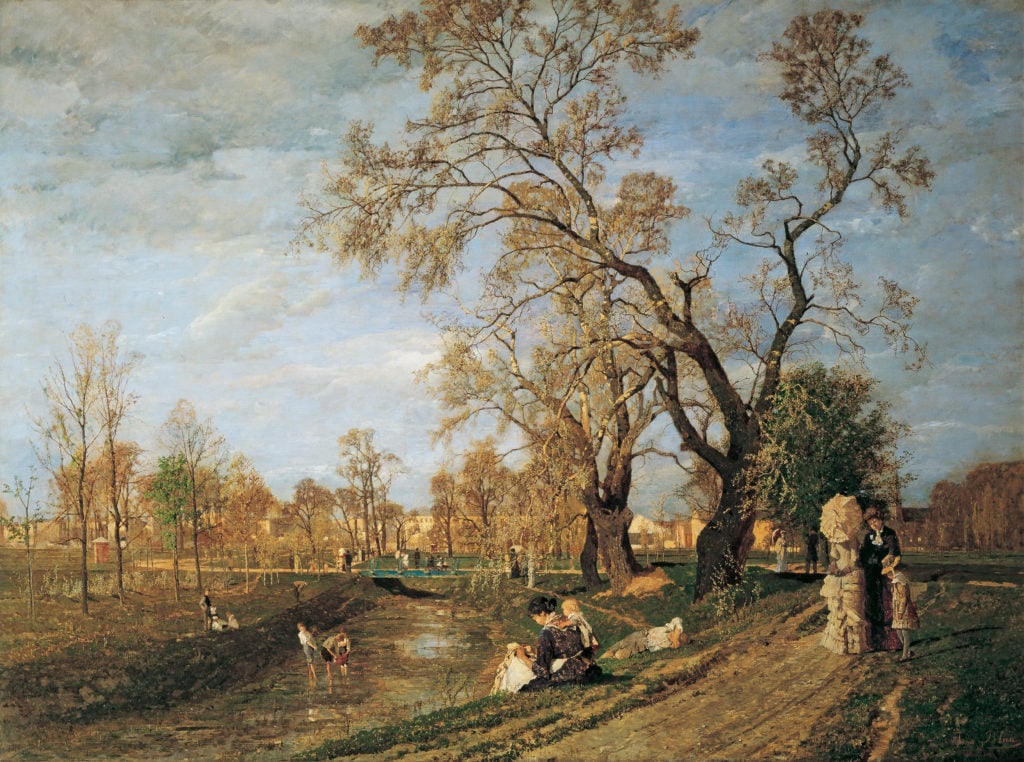
Tina Blau © Belvedere, Wien, Foto: Johannes Stoll.
Tina Blau, born in 1845, was the first female art star in the Austrian capital. Then, women could paint still-lifes and landscapes, but painting nudes or political work was taboo. She dared to break these restrictions and publicly question whether women could create art of their own and not merely imitate men. Financially supported by her father, she painted works like Spring in the Prater (1885), a sweeping scene of leisure in one of Vienna’s largest parks. Her work wasn’t always well-received, but decades later, critic Adalbert Seligmann cited Spring in the Prater as an early example of “Atmospheric Impressionism,” an Austrian branch of the movement.
Teresa Feodorowna Ries: the Provocateur
Teresa Feodorowna Ries’s massive marble sculptures greet visitors in the show’s first space. When her Witch Doing Her Toilette on Walpurgis Night (1895) was first shown in Vienna’s Künstlerhaus, scandal erupted. The figure’s face and hair are wild; her pose too provocative and “ugly.” Worse, Ries had infiltrated the male world of sculpture. Yet Austrian emperor Franz Josef was taken by the piece and Ries became well known, later creating a bust of Mark Twain during his time in Vienna. Born in Russia, she cheated her way into art school in Moscow and was expelled for arguing with her teachers. She emigrated to Vienna—a hot-spot for art and culture—at 21, already divorced.
As a Jew, she had to leave Austria for Switzerland in 1942, leaving her artworks behind in a donation to the Wien Museum. In a 1902 self-portrait, she wears a painter’s smock and looks boldly at the viewer, as if to say, “I told you so.”
Broncia Koller-Pinell: the Doyenne
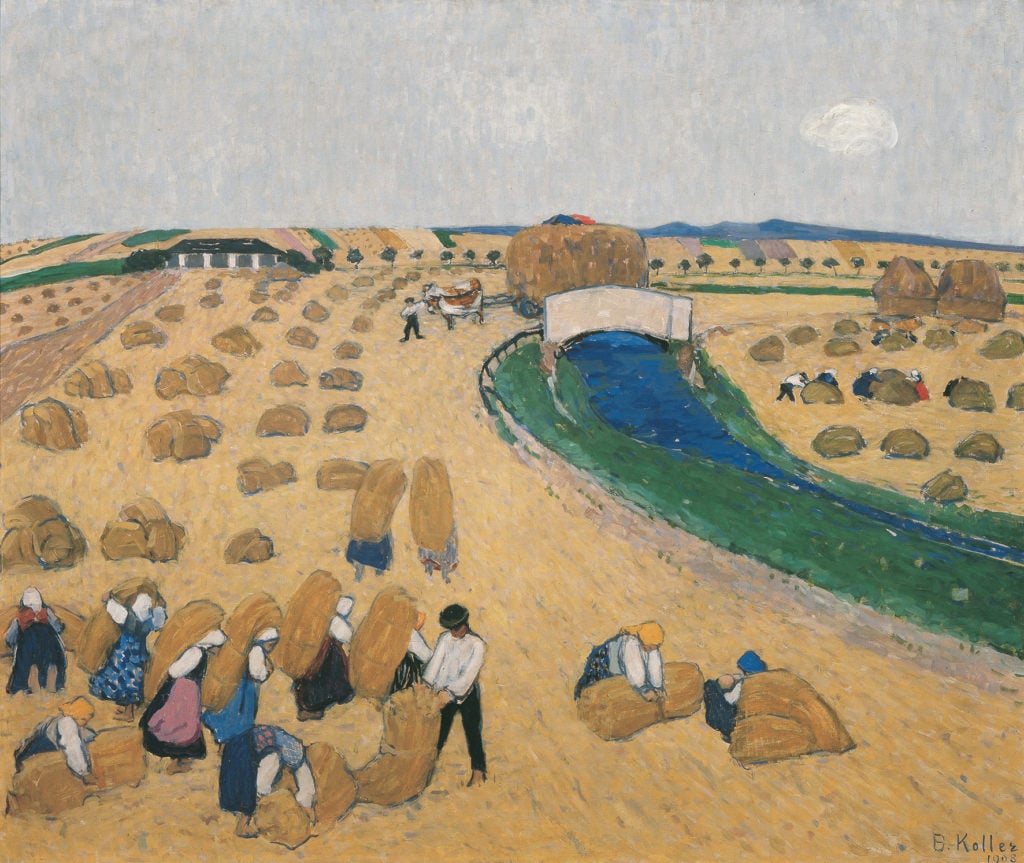
Broncia Koller-Pinell. © Belvedere, Wien.
Painting from 1903 to 1943 and, according to Fellmer, a “red thread running through this exhibition,” Koller-Pinell studied art abroad (like many of her contemporaries, who were schooled in Paris or Munich). Her work’s everyday subject matter and techniques moved from Expressionism to New Objectivity. She debuted at 25 in the Vienna International Art Exhibition in 1888 and later showed at the World’s Fair in Chicago. She was also part of the social circle around Klimt and knew Sigmund Freud and other important fin de siècle figures.
Decades later, she was described as a “housewife who paints,” but Fellmer stresses that Koller’s oeuvre is a document of its time, and she continued to experiment—and influence other painters, like Egon Schiele—well into her 60s.
Fanny Harlfinger-Zakucka: the Instigator
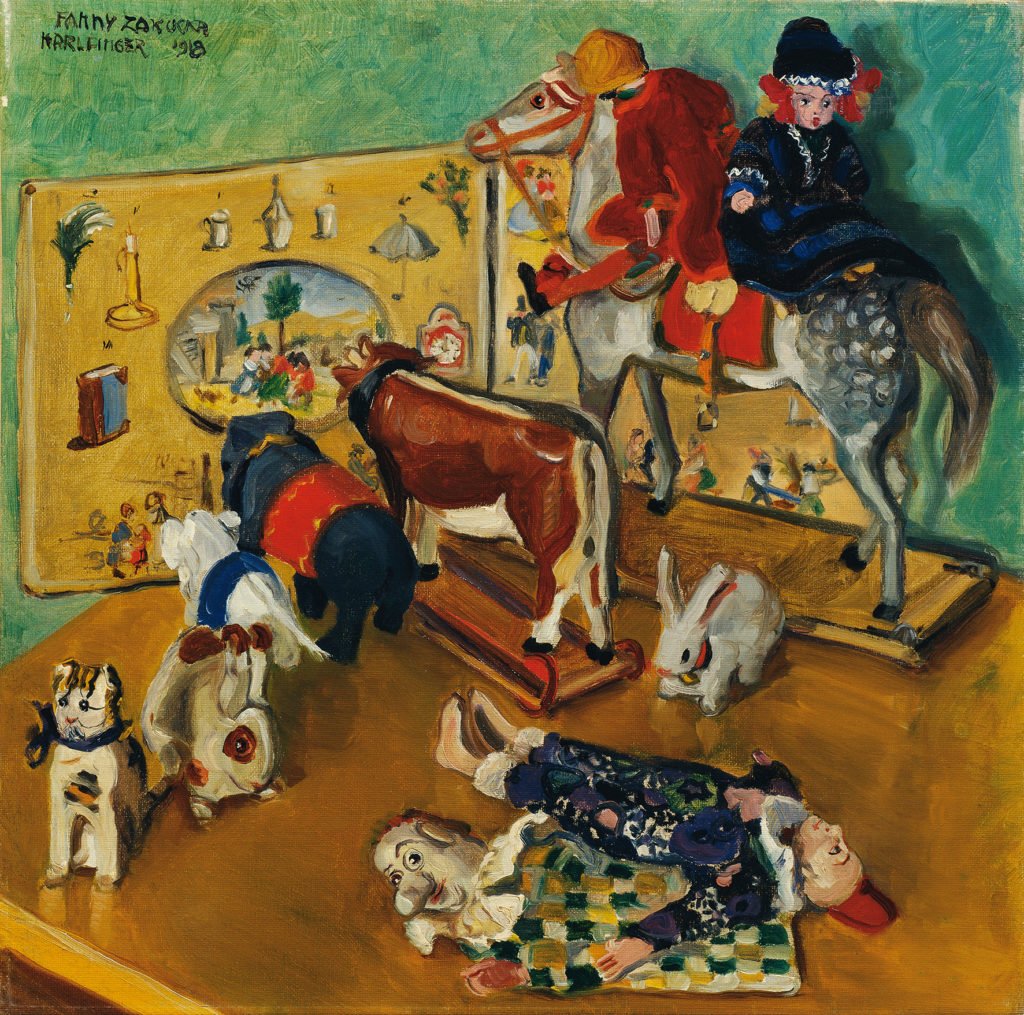
Fanny Harlfinger-Zakucka, Spielzeug, 1918. © Belvedere, Wien.
Fanny Harlfinger-Zakucka, who painted street scenes and portraits in bold, saturated colors, was an organizer who in 1926 broke from the fragmenting Association of Woman Artists and co-founded Wiener Frauenkunst, a collective that explored how art could intersect with everyday life. These women mounted thematic exhibitions, a new format at the time, and produced catalogues with theoretical essays. Harlfinger-Zakucka’s graphic work survived, but only one oil painting was known until, during the research for this show, her grandson found 40 paintings in his basement.
Stephanie Hollenstein: the Radical

Stephanie Hollenstein, Blockhaus im Wald, © Galerie Hollenstein — Kunstraum und Sammlung, Lustenau.
Stephanie Hollenstein was one of the only artists in this exhibition to grow up poor. A farmer’s daughter, her self-taught work won her a scholarship to study art in Munich. Later, back in Austria, she disguised herself as a man to fight on the front in World War I. When her identity was revealed, she remained on the front working for the Austro-Hungarian War Press Office; her landscapes, marked with heavy brushstrokes, were inspired by this time and her rural upbringing. She joined the Nazi party early, was openly lesbian, and wildly successful until she died in 1944.
“City of Women: Female Artists in Vienna from 1900 to 1938” is on view at the Lower Belvedere, Rennweg 6, 1030 Vienna, Austria, January 25–May 19, 2019.
